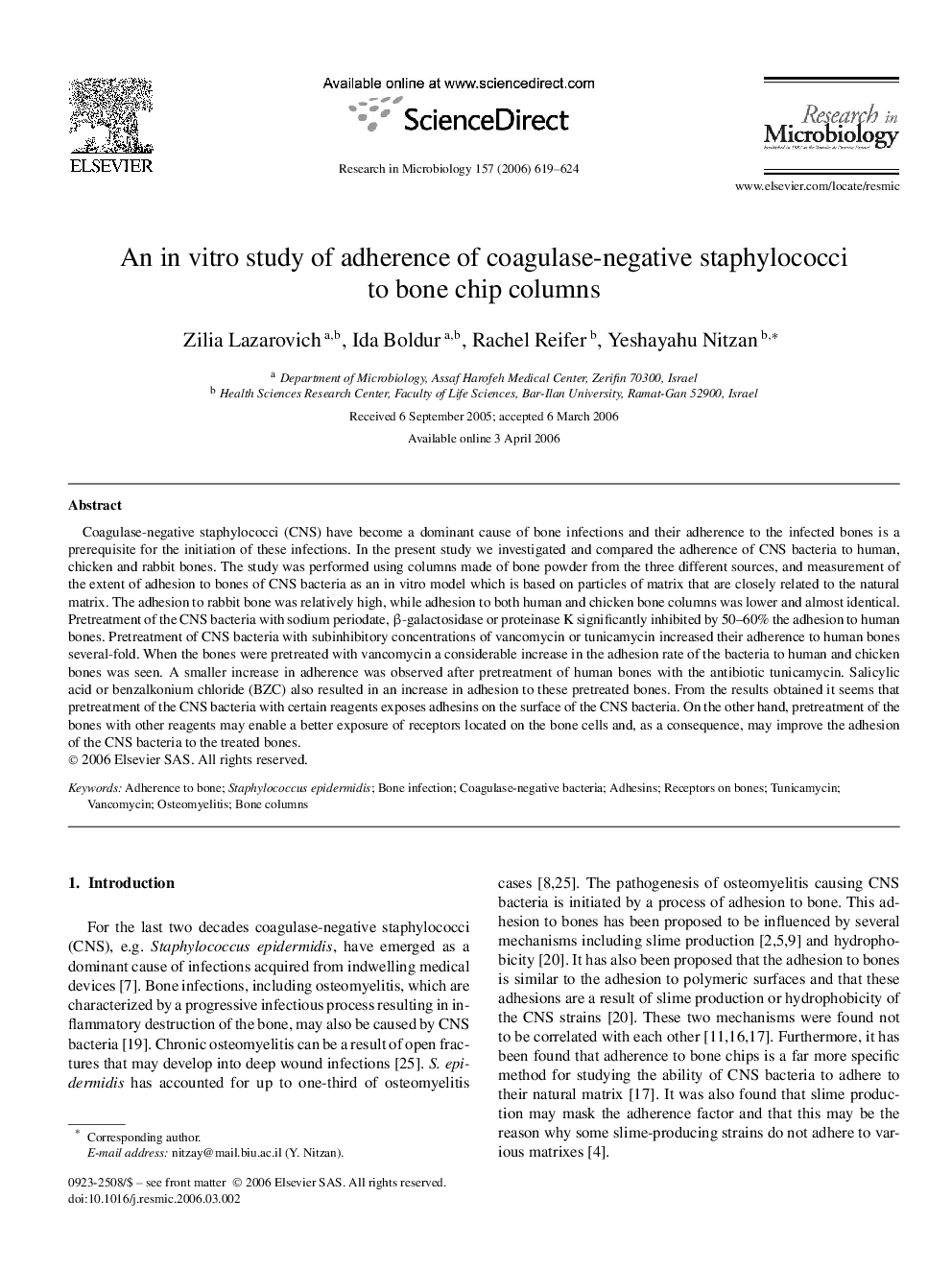| کد مقاله | کد نشریه | سال انتشار | مقاله انگلیسی | نسخه تمام متن |
|---|---|---|---|---|
| 4359554 | 1300521 | 2006 | 6 صفحه PDF | دانلود رایگان |

Coagulase-negative staphylococci (CNS) have become a dominant cause of bone infections and their adherence to the infected bones is a prerequisite for the initiation of these infections. In the present study we investigated and compared the adherence of CNS bacteria to human, chicken and rabbit bones. The study was performed using columns made of bone powder from the three different sources, and measurement of the extent of adhesion to bones of CNS bacteria as an in vitro model which is based on particles of matrix that are closely related to the natural matrix. The adhesion to rabbit bone was relatively high, while adhesion to both human and chicken bone columns was lower and almost identical. Pretreatment of the CNS bacteria with sodium periodate, β-galactosidase or proteinase K significantly inhibited by 50–60% the adhesion to human bones. Pretreatment of CNS bacteria with subinhibitory concentrations of vancomycin or tunicamycin increased their adherence to human bones several-fold. When the bones were pretreated with vancomycin a considerable increase in the adhesion rate of the bacteria to human and chicken bones was seen. A smaller increase in adherence was observed after pretreatment of human bones with the antibiotic tunicamycin. Salicylic acid or benzalkonium chloride (BZC) also resulted in an increase in adhesion to these pretreated bones. From the results obtained it seems that pretreatment of the CNS bacteria with certain reagents exposes adhesins on the surface of the CNS bacteria. On the other hand, pretreatment of the bones with other reagents may enable a better exposure of receptors located on the bone cells and, as a consequence, may improve the adhesion of the CNS bacteria to the treated bones.
Journal: Research in Microbiology - Volume 157, Issue 7, September 2006, Pages 619-624